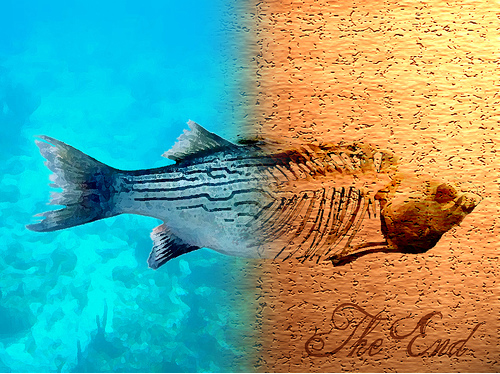Por Jefferson Klein - Jornal do Comércio RS - 2 de janeiro de 2025 - Termelétrica…
Sinal vermelho ligado

O eco de 24 de outubro de 2007
Um recente estudo feito por cientistas britânicos das universidades de York e de Leeds esboçou um diagnóstico catastrófico para o futuro.
De acordo com o resultado, o aquecimento global poderá levar a extinção metade das espécies de plantas e animais que existem no planeta.
Eles parecem ter um bom embasamento para as previsões.
Notícia do The Guardian explica* que o trabalho avaliou a relação entre o clima e a biodiversidade na Terra nos últimos 520 milhões de anos.
As análises mostram que, em épocas mais frias, a tendência aponta para um crescimento nos tipos de fauna e flora.
Já quando as temperaturas aumentam, no entanto, acontece justamente o contrário: mais espécies são levadas ao desaparecimento.
The guardian de 24 de outubro de 2007
* Warming could wipe out half of all species
Rising global temperatures caused by climate change could trigger a huge extinction of plants and animals, according to a study. Though humans would probably survive such an event, half of the world’s species could be wiped out.
Scientists at the University of York and the University of Leeds examined the relationship between climate and biodiversity over the past 520m years – almost the entire fossil record – and uncovered an association between the two for the first time. When the Earth’s temperatures are in a “greenhouse” climate phase, they found that extinctions rates were relatively high. Conversely, during cooler “icehouse” conditions, biodiversity increased.
The results, published today in the Proceedings of the Royal Society B, suggest that the predictions of a rapid rise in the Earth’s temperature due to man-made climate change could have a similar effect on biodiversity.
Peter Mayhew, a population ecologist at the University of York and one of the authors of the research paper, said: “Our results provide the first clear evidence that global climate may explain substantial variation in the fossil record in a simple and consistent manner. If our results hold for current warming – the magnitude of which is comparable with the long-term fluctuations in Earth climate – they suggest that extinctions will increase.”
According to the Intergovernmental Panel on Climate Change, global temperatures could increase by as much as 6C by the end of the century.
Dr Mayhew found that of the five mass extinction events in the Earth’s history, four were linked to greenhouse climates where the Earth was covered in heat-trapping carbon dioxide or methane gases. This includes the extinction of the dinosaurs 65m years ago , thought to have been caused by the impact of a large asteroid on the Yucatan peninsula and beneath the Gulf of Mexico.
The largest ever extinction occurred 251m years ago, when 95% of animal and plant species were killed off.
The most likely cause was floods of lava erupting from the central Atlantic region – an event that triggered the opening of the Atlantic ocean.
Tim Benton, of the University of Leeds, said: “The long-term association has not been seen before as previous studies have largely been confined to relatively short geological periods, limited geographical extents and few groups of organisms.”
Dr Mayhew said extinction through global warming was expected to occur through mismatches between the climates to which organisms are adapted, and the future distributions of those climates.




Este Post tem 0 Comentários